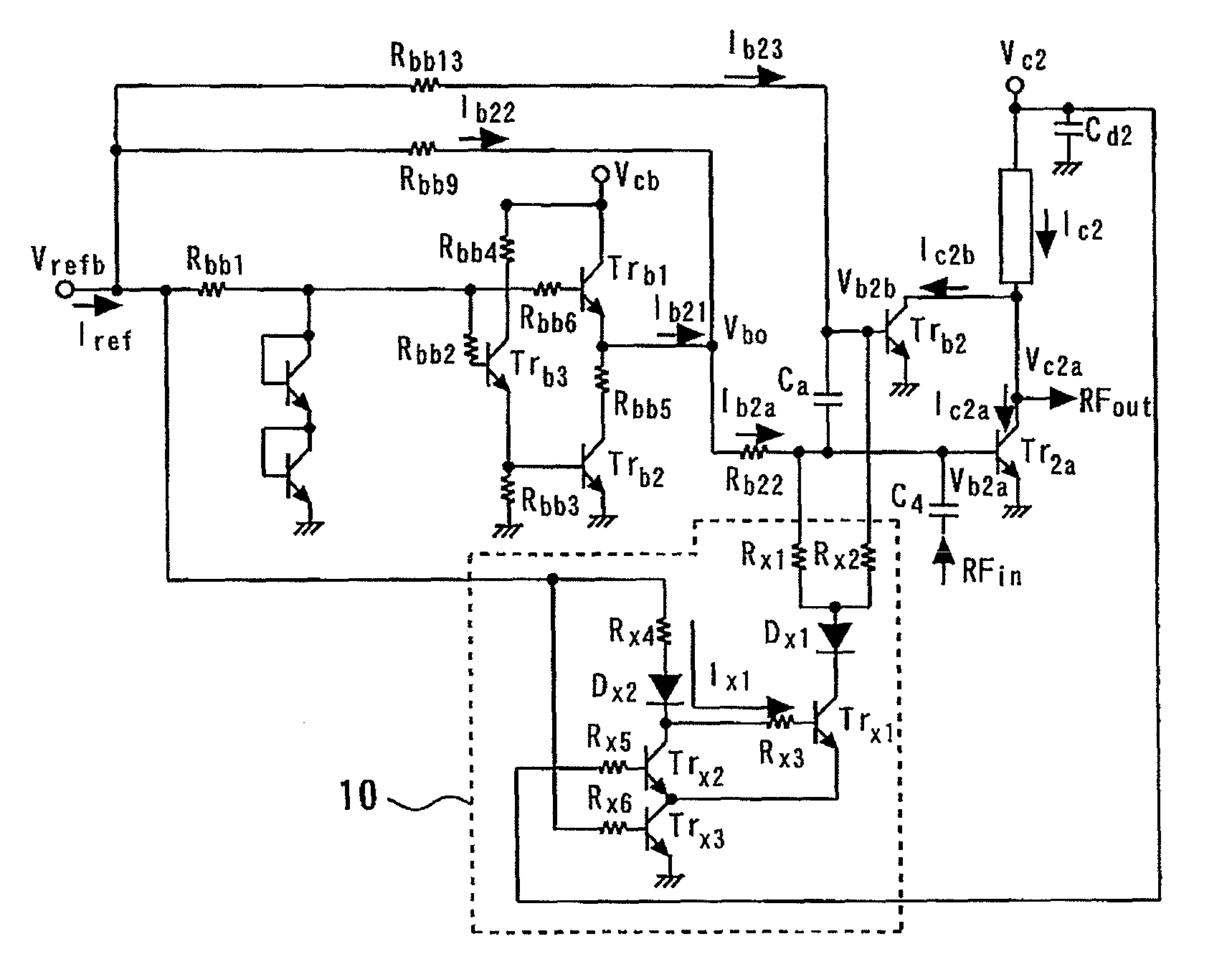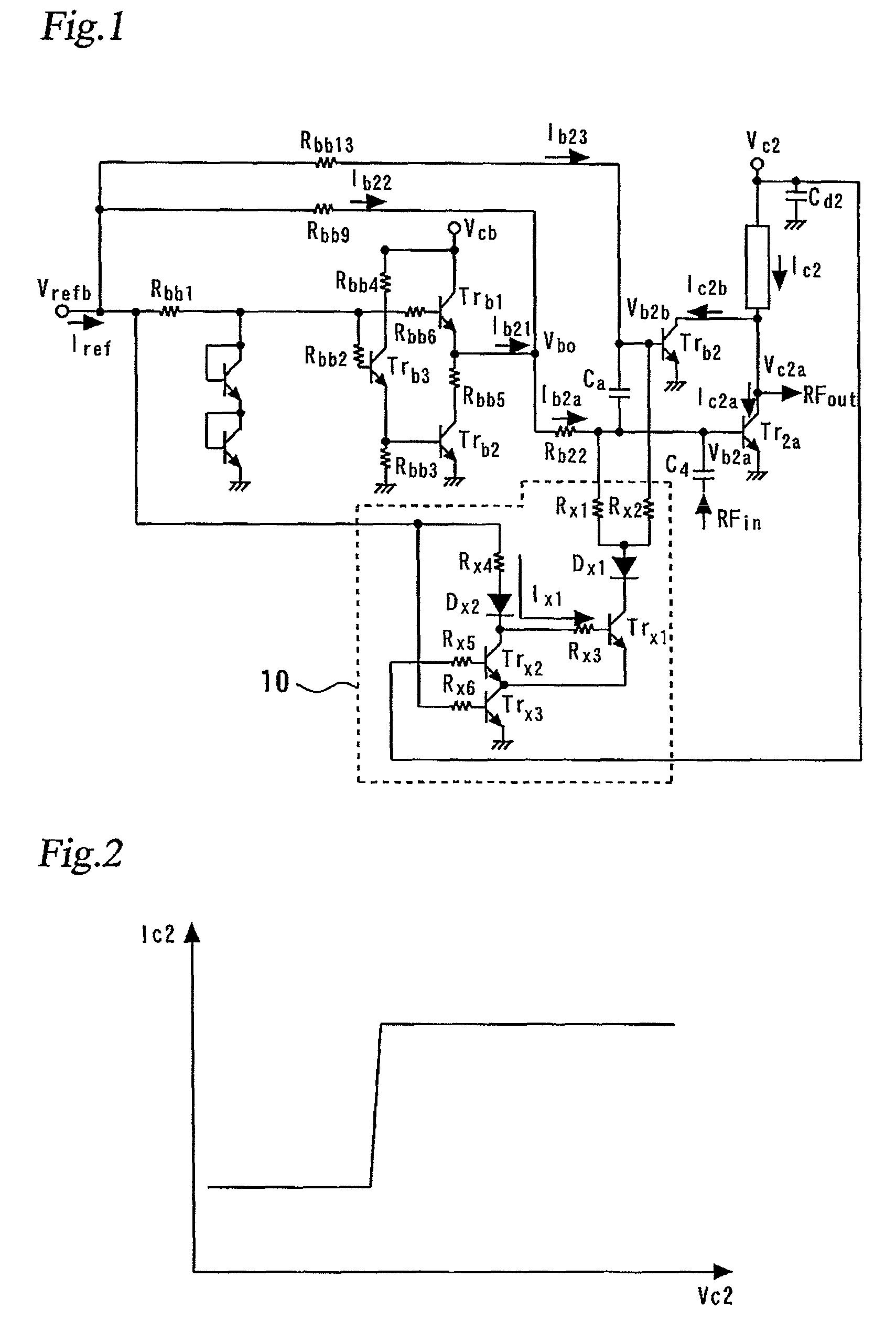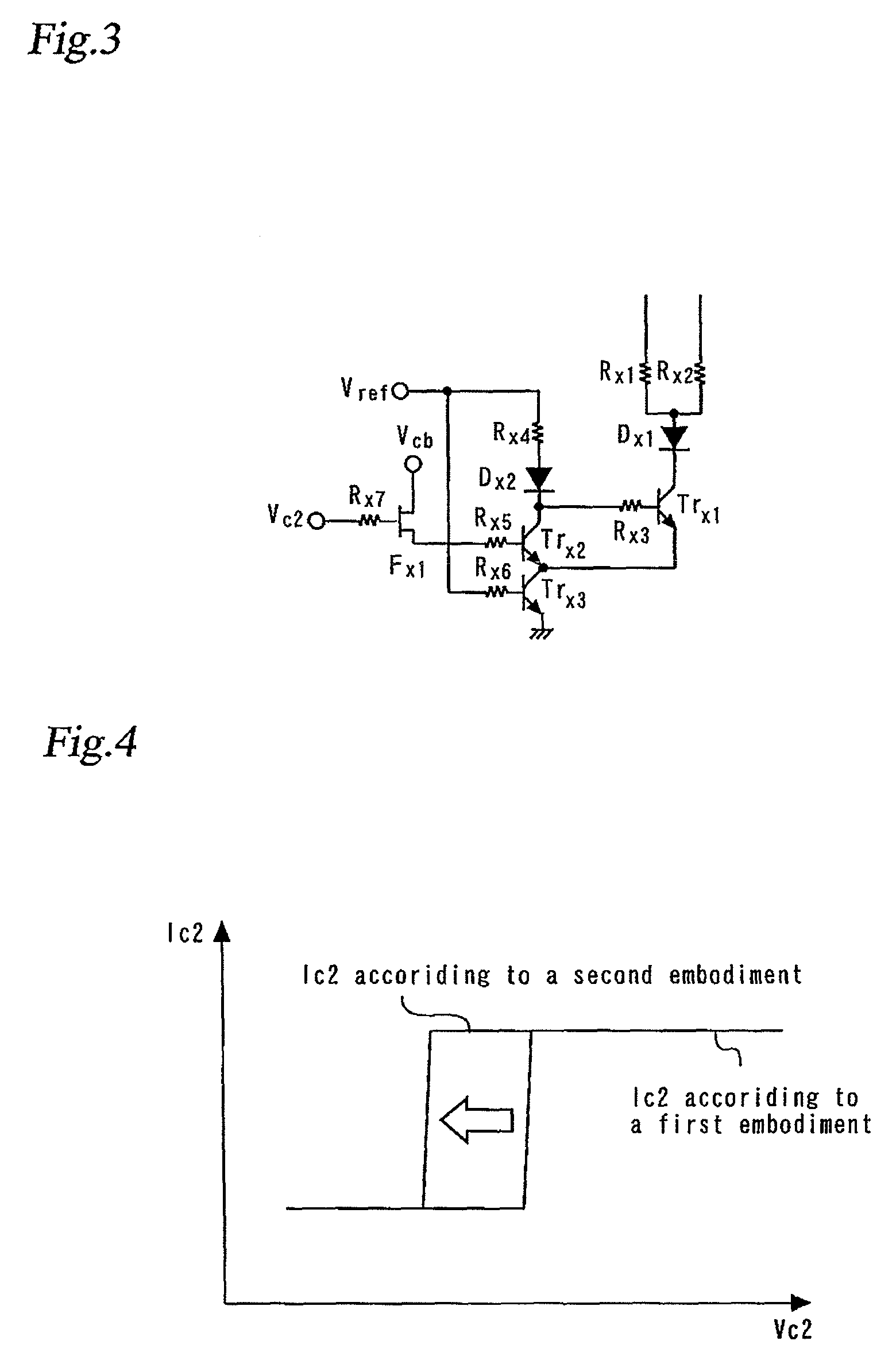Power amplifier bias circuit
a power amplifier and bias circuit technology, applied in the direction of amplifiers, amplifiers with semiconductor devices only, amplifiers, etc., can solve the problems of increasing temperature, difficult to enable gaas-hbt power amplifiers to exhibit satisfactory distortion characteristics during low or medium output operation, etc., to achieve low distortion characteristics
- Summary
- Abstract
- Description
- Claims
- Application Information
AI Technical Summary
Benefits of technology
Problems solved by technology
Method used
Image
Examples
first embodiment
[0052]FIG. 1 is a circuit diagram showing a bias circuit for a GaAs-HBT power amplifier according to a first embodiment of the present invention. More specifically, FIG. 1 shows an exemplary configuration of a power amplifier and its bias circuit according to the first embodiment. This circuit uses GaAs-HBTs (Heterojunction Bipolar Transistors). In FIG. 1, those components common to the circuit diagrams shown in FIGS. 25 and 26 retain the same reference numerals and will not be described herein. Further, although the present embodiment will be described with reference to the second stage bias circuit of a two stage amplifier, it is to be understood that the embodiment may be applied to the first stage bias circuit, with the same effect.
[0053]The circuit configuration shown in FIG. 1 includes a voltage drive bias circuit and a current drive bias circuit connected in a parallel relationship to each other, wherein the voltage drive bias circuit typically includes an emitter follower an...
second embodiment
[0075]FIG. 3 is a circuit diagram showing the idle current control circuit of a GaAs-HBT power amplifier bias circuit according to a second embodiment of the present invention. Specifically, the circuit diagram shown in FIG. 3 is a part of a circuit diagram of the GaAs-HBT power amplifier bias circuit of the second embodiment, and illustrates the idle current control circuit 10 which uses the collector voltage Vc2 of the amplifier transistor. The power amplifier bias circuit of the second embodiment differs from that of the first embodiment in that the idle current control circuit 10 using the collector voltage Vc2 additionally includes an FET (Field Effect Transistor) connected to the Vc2 terminal side, which characterizes the second embodiment. The following description of the configuration of the second embodiment will focus on the differences from the first embodiment.
[0076]As shown in FIG. 3, the idle current control circuit 10 of the second embodiment includes a first FET (Fie...
third embodiment
[0079]FIG. 5 is a circuit diagram showing the idle current control circuit of a GaAs-HBT power amplifier bias circuit according to a third embodiment of the present invention. Specifically, the circuit diagram shown in FIG. 5 is a part of a circuit diagram of the GaAs-HBT power amplifier bias circuit of the third embodiment, and illustrates the idle current control circuit 10 which uses the collector voltage Vc2 of the amplifier transistor. The power amplifier bias circuit of the third embodiment differs from that of the second embodiment in that the idle current control circuit 10 using the collector voltage Vc2 additionally includes a Schottky barrier diode Dx3 connected to the Vc2 terminal side (see FIG. 5), which characterizes the third embodiment.
[0080]Specifically, in the third embodiment the Schottky barrier diode Dx3 is connected between the FET Fx1 and the resistance Rx5, as shown in FIG. 5. The anode of Dx3 is connected to the source of Fx1, and the cathode of Dx3 is conne...
PUM
 Login to View More
Login to View More Abstract
Description
Claims
Application Information
 Login to View More
Login to View More - R&D
- Intellectual Property
- Life Sciences
- Materials
- Tech Scout
- Unparalleled Data Quality
- Higher Quality Content
- 60% Fewer Hallucinations
Browse by: Latest US Patents, China's latest patents, Technical Efficacy Thesaurus, Application Domain, Technology Topic, Popular Technical Reports.
© 2025 PatSnap. All rights reserved.Legal|Privacy policy|Modern Slavery Act Transparency Statement|Sitemap|About US| Contact US: help@patsnap.com



